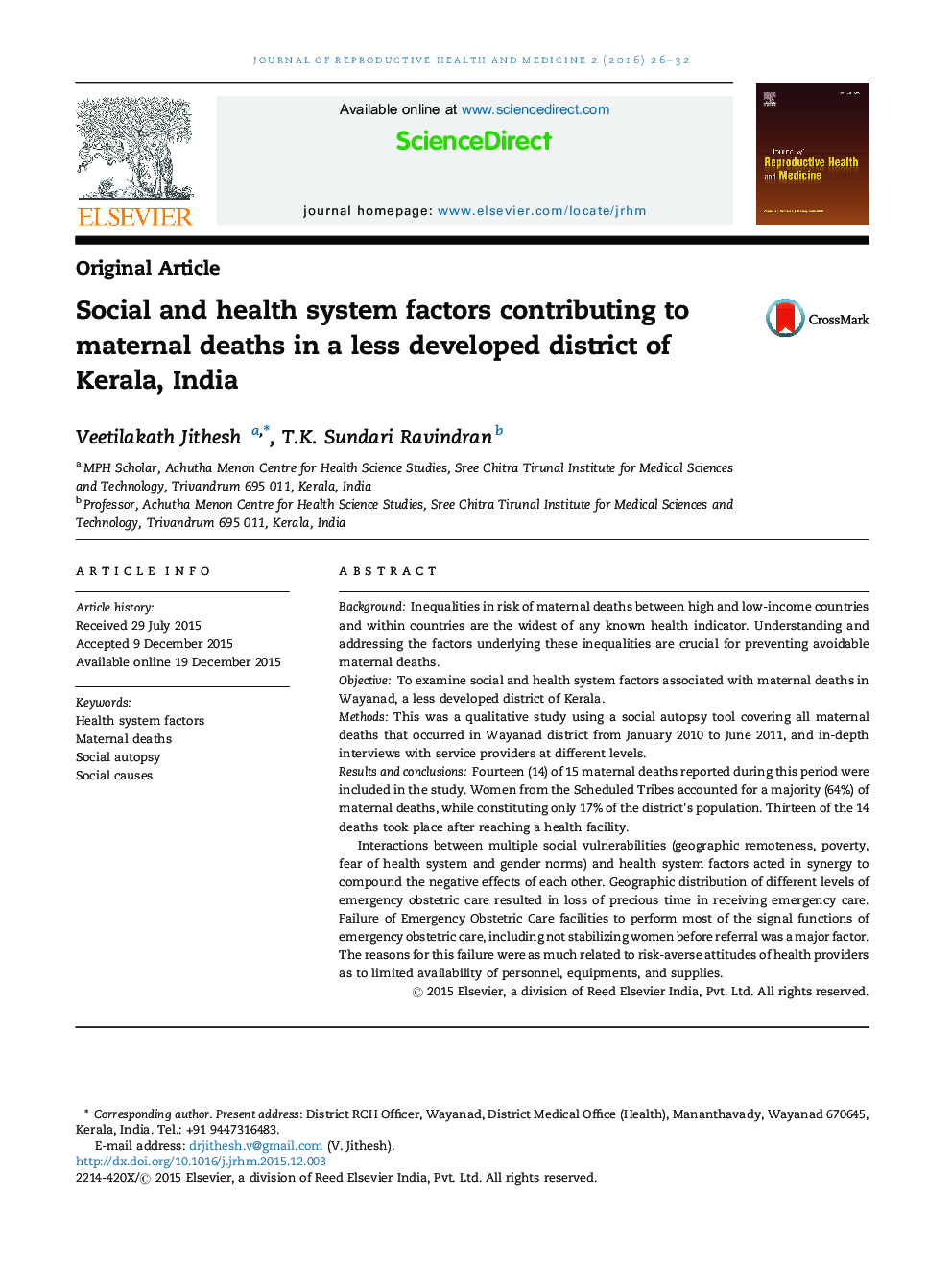| Article ID | Journal | Published Year | Pages | File Type |
|---|---|---|---|---|
| 3251998 | Journal of Reproductive Health and Medicine | 2016 | 7 Pages |
BackgroundInequalities in risk of maternal deaths between high and low-income countries and within countries are the widest of any known health indicator. Understanding and addressing the factors underlying these inequalities are crucial for preventing avoidable maternal deaths.ObjectiveTo examine social and health system factors associated with maternal deaths in Wayanad, a less developed district of Kerala.MethodsThis was a qualitative study using a social autopsy tool covering all maternal deaths that occurred in Wayanad district from January 2010 to June 2011, and in-depth interviews with service providers at different levels.Results and conclusionsFourteen (14) of 15 maternal deaths reported during this period were included in the study. Women from the Scheduled Tribes accounted for a majority (64%) of maternal deaths, while constituting only 17% of the district's population. Thirteen of the 14 deaths took place after reaching a health facility.Interactions between multiple social vulnerabilities (geographic remoteness, poverty, fear of health system and gender norms) and health system factors acted in synergy to compound the negative effects of each other. Geographic distribution of different levels of emergency obstetric care resulted in loss of precious time in receiving emergency care. Failure of Emergency Obstetric Care facilities to perform most of the signal functions of emergency obstetric care, including not stabilizing women before referral was a major factor. The reasons for this failure were as much related to risk-averse attitudes of health providers as to limited availability of personnel, equipments, and supplies.
